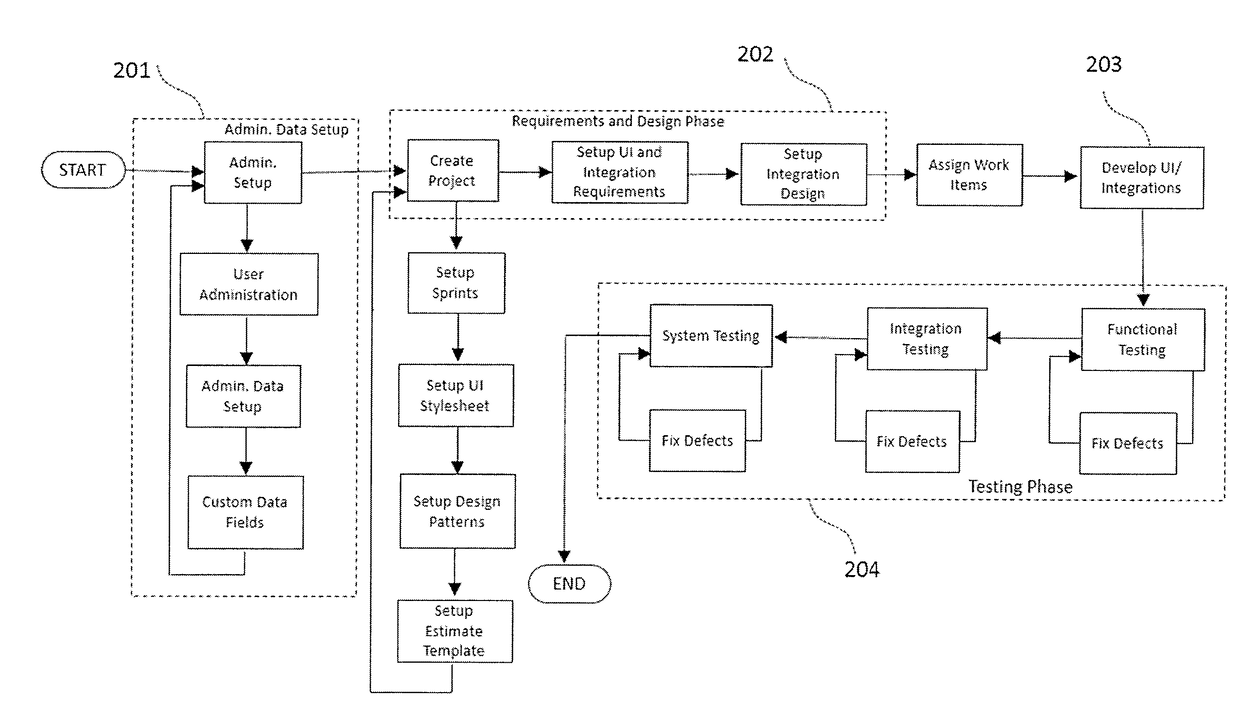Integrated System for Software Application Development
a software application and integrated technology, applied in the field of software application development systems, can solve the problems of unstructured data view, lack of normalization, and lack of data sour
- Summary
- Abstract
- Description
- Claims
- Application Information
AI Technical Summary
Benefits of technology
Problems solved by technology
Method used
Image
Examples
Embodiment Construction
[0085]The subject disclosure overcomes many of the prior art problems associated with using a collection of tools to manage the software development process. Of particular importance is the integration provided between various aspects of the software development process, and how they are visualized and connected together for a comprehensive and holistic view of the software development process from requirements analysis, design, development to testing and project management.
[0086]FIG. 3 illustrates the core activities of the system—setting up the requirements and design specifications for the software application. It covers the steps involved in setting up the requirements and design for a software application from start.
[0087]The individual elements of FIG. 3 are described as follows:[0088]1. Release and Sprints set up 301: Allows users to define the timeline aspect of project management, the duration and number of sprints for the project release.[0089]2. Style sheet set up 302: Al...
PUM
 Login to View More
Login to View More Abstract
Description
Claims
Application Information
 Login to View More
Login to View More - R&D
- Intellectual Property
- Life Sciences
- Materials
- Tech Scout
- Unparalleled Data Quality
- Higher Quality Content
- 60% Fewer Hallucinations
Browse by: Latest US Patents, China's latest patents, Technical Efficacy Thesaurus, Application Domain, Technology Topic, Popular Technical Reports.
© 2025 PatSnap. All rights reserved.Legal|Privacy policy|Modern Slavery Act Transparency Statement|Sitemap|About US| Contact US: help@patsnap.com



